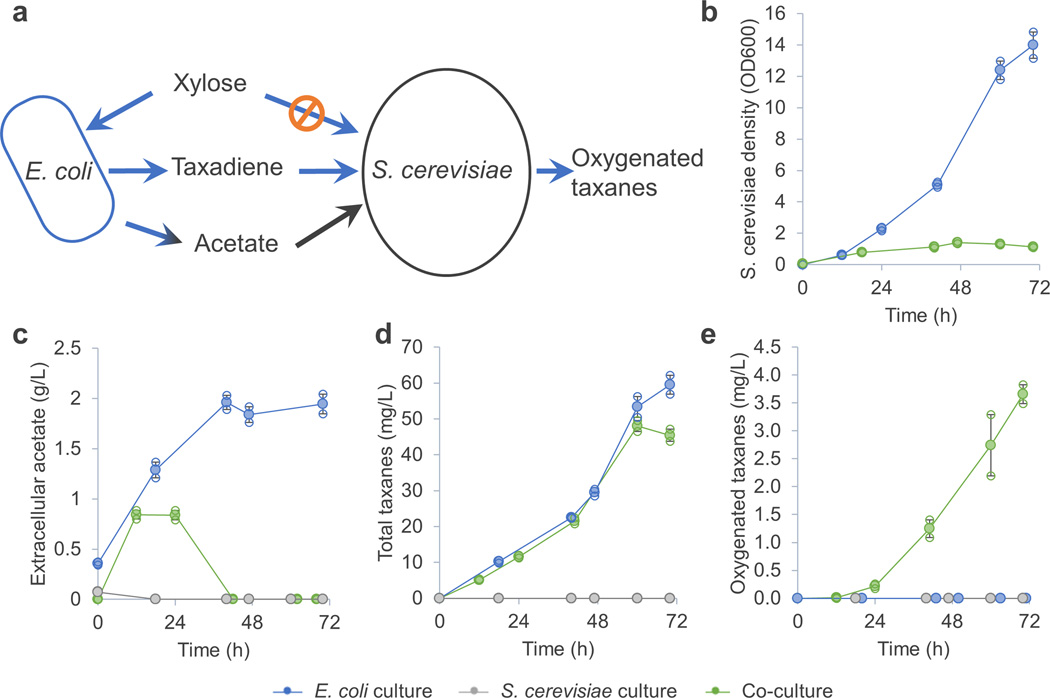Figure 2.
A mutualistic E. coli – S. cerevisiae consortium for production of oxygenated taxanes. (a) E. coli TaxE1 grew on xylose and produced acetate that served as sole carbon source for the yeast to grow. The taxadiene produced by E. coli TaxE1 was oxygenated in yeast TaxS1. (b) Yeast TaxS1 could only grow in presence of the E. coli TaxE1. (c) Yeast TaxS1 removed the acetate produced by E. coli TaxE1. (d) The presence of yeast TaxS1 did not compromise taxane production of E. coli TaxE1. (e) Yeast TaxS1 can only produce oxygenated taxanes when E. coli TaxE1 supplied taxadiene. The taxadiene oxygenation efficiency of this co-culture was 8% (4 mg/L out of 50 mg/L taxadiene was oxygenated). Error bars, s.e. in all graphs (some error bars are smaller than the plot symbols). All replicates have also been plotted in all graphs (open circle), which indicates the number of replicates for each experiment.

